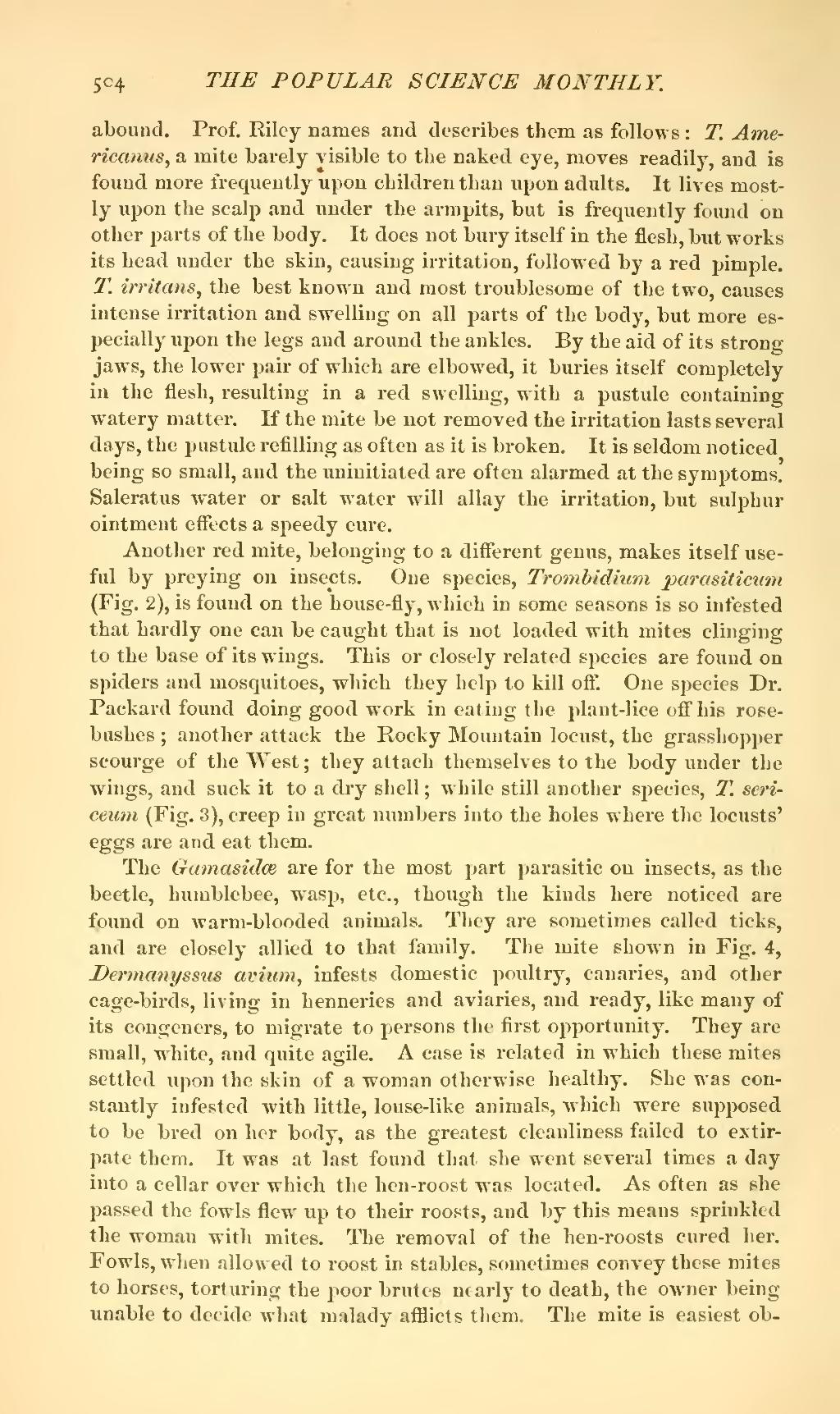abound. Prof. Riley names and describes them as follows: T. Americanus, a mite barely visible to the naked eye, moves readily, and is found more frequently upon children than upon adults. It lives mostly upon the scalp and. under the armpits, but is frequently found on other parts of the body. It does not bury itself in the flesh, but works its head under the skin, causing irritation, followed by a red pimple. T. irritans, the best known and most troublesome of the two, causes intense irritation and swelling on all parts of the body, but more especially upon the legs and around the ankles. By the aid of its strong jaws, the lower pair of which are elbowed, it buries itself completely in the flesh, resulting in a red swelling, with a pustule containing watery matter. If the mite be not removed the irritation lasts several days, the pustule refilling as often as it is broken. It is seldom noticed, being so small, and the uninitiated are often alarmed at the symptoms. Saleratus water or salt water will allay the irritation, but sulphur ointment effects a speedy cure.
Another red mite, belonging to a different genus, makes itself useful by preying on insects. One species, Trombidium parasiticum (Fig. 2), is found on the house-fly, which in some seasons is so infested that hardly one can be caught that is not loaded with mites clinging to the base of its wings. This or closely related species are found on spiders and mosquitoes, which they help to kill off. One species Dr. Packard found doing good work in eating the plant-lice off his rose-bushes; another attack the Rocky Mountain locust, the grasshopper scourge of the West; they attach themselves to the body under the wings, and suck it to a dry shell; while still another species, T. sericeum (Fig. 3), creep in great numbers into the holes where the locusts' eggs are and eat them.
The Gamasidæ are for the most part parasitic on insects, as the beetle, humblebee, wasp, etc., though the kinds here noticed are found on warm-blooded animals. They are sometimes called ticks, and are closely allied to that family. The mite shown in Fig. 4, Dermanyssus avium, infests domestic poultry, canaries, and other cage-birds, living in henneries and aviaries, and ready, like many of its congeners, to migrate to persons the first opportunity. They are small, white, and quite agile. A case is related in which these mites settled upon the skin of a woman otherwise healthy. She was constantly infested with little, louse-like animals, which were supposed to be bred on her body, as the greatest cleanliness failed to extirpate them. It was at last found that she went several times a day into a cellar over which the hen-roost was located. As often as she passed the fowls flew up to their roosts, and by this means sprinkled the woman with mites. The removal of the hen-roosts cured her. Fowls, when allowed to roost in stables, sometimes convey these mites to horses, torturing the poor brutes nearly to death, the owner being unable to decide what malady afflicts them. The mite is easiest ob-
